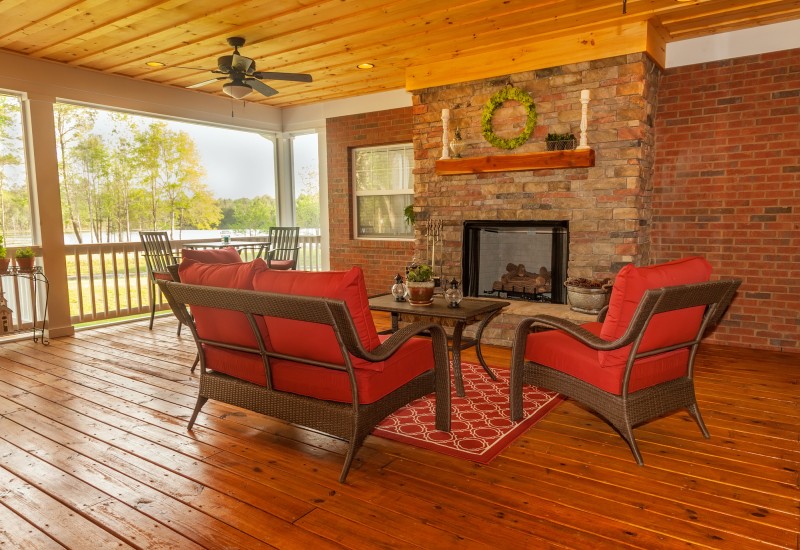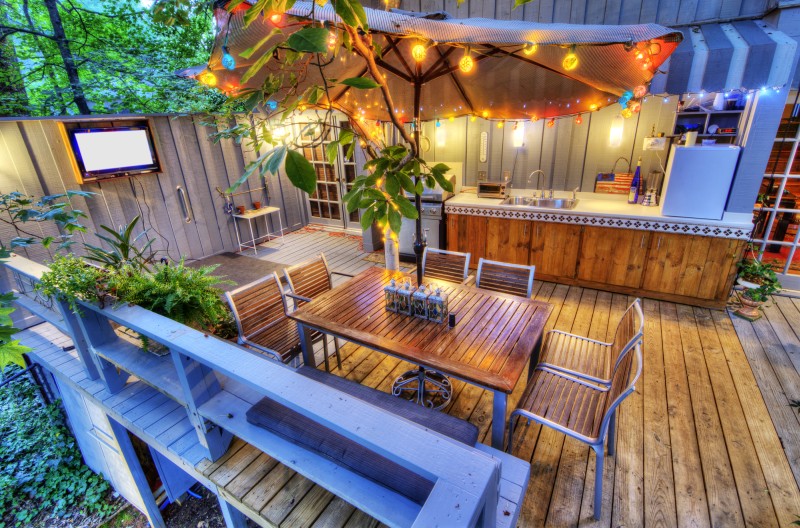Old wood best to burn, old wine to drink, and old friends to trust – Athenaeus
He may have walked the earth nearly two thousand years ago, but Athaneus of Naucratis’s sage words of wisdom about the only wood you should burn are as relevant today as they were during his epoch.

For the most part, the things that we use wood to build haven’t really changed in the intervening years between Athaneus time and now. But the way we prepare and treat wood before we use it to make those things is vastly different.
While you might not realize it, pressure-treated wood is used to make all sorts of common everyday things. The slide and the swings that your children play on in the local park? They’re definitely made from pressure-treated wood.
The decking and picnic table in your yard? They’re almost certainly made from wood that’s been pressure treated. And the telephone poles and mailboxes that litter and fill our vast desert highways and residential streets?
That’s right, they’re made from pressure-treated wood too. Right about now, you’re probably asking yourself “What is pressure-treated wood?” and it’s not only a completely valid question to ask, it’s also one that we’re more than happy to answer.
Before going any further however, let’s quickly answer the question which brought you to this article:
Is it a good idea to burn pressure treated wood? The quick answer is: Like all wood, even when it’s been press-treated, it will burn, but whatever you do, don’t burn pressure-treated wood.
Pressure Treated Wood – What Is It?
The short answer to the above question is, it’s a way of preserving wood and extending its usable life so that it’s more durable and hardy and won’t succumb to the rigors of nature.

While we’d normally vouch for the veracity of any succinct answer, and take it as read that it would be the only one we’d ever need, due to the surprisingly complex and broad nature of the question, it needs a more in-depth answer.
Pressure-treated wood is wood that has undergone and been subjected to a preservation process that exposes it to chemicals that are designed to protect it from the elements and preserve its integrity, strength, and structure.
The initial stage of the operation involves the wood being exposed to negative pressure to remove all of the air that has been trapped within its cellular structure.
These air pockets and bubbles, which are completely natural, create voids within the wood which can weaken it and make it more prone to damage.
The air is removed from the wood being treated in a pressure chamber, which creates a vacuum by generating negative pressure that then draws all of the air out of the wood.
The air is then replaced with a mixture of chemicals that includes preservatives, pesticides, and fungicides, all of which are used to strengthen and extend the woods’ usable lifespan.
Taking its name directly from the process that it undergoes, the exposure to negative and then positive pressure which infuses it with preservatives and removes air from any naturally occurring voids in its structure, once it’s been removed from the chamber, the wood is referred to as having been “pressure treated”
Why Is Wood Pressure Treated?
It’s a simple, straightforward question that has an equally simple answer. Why is wood pressure treated? To preserve it and extend its usable life and to protect it from the elements and nature.
Because a lot of pressure-treated wood is used to make things that will spend the majority of the life outside, it needs to have a degree of protection from the weather, insects, and the various types of fungi that attack, and feast on it.
As pressure-treated wood is also used to make picnic tables, decking, and playground equipment, all of which need to be hard-wearing and built to endure a lifetime of abuse, some of the chemicals used in the preservation process make wood more durable and strengthen its natural structure.
Untreated wood that’s used in the construction of outdoor furniture and decking is more prone to failure than pressure-treated wood is as it doesn’t have the same level of chemical protection that pressure-treated wood does.
While there has been a growing demand for untreated wood, it shouldn’t be used in the same way that wood that’s been subjected to pressure treatment is, as it doesn’t possess the same level of durability and universal strength that treated wood does.
Burning Pressure Treated Wood
Like all wood, even when it’s been press-treated, it will burn, but whatever you do, don’t burn pressure-treated wood.
Because of the chemical preservation process it’s undergone when it’s burned, pressure-treated wood releases all of those chemicals into the atmosphere, and as is the case with almost every artificial preservative, each and every one of the chemicals used to pressure treat wood, are dangerous and even minimal exposure to them can lead to people developing long term health problems.
And the closer you are to the pressure treated wood inferno, the more likely it is that you’ll suffer physical damage from being exposed to the fumes.
The main problem with burning pressure-treated wood stems from one of the most common chemical preservatives used during the procedure to extend its useful life, chromated copper arsenate, or as its more commonly known, CCA.
The three major compounds that are combined to make CCA, Chromium, Copper, and Arsenic can be, and are, harmful to life and the Environmental Protection Agency (EPA) has flagged CCA as a dangerous compound and now prohibits its use in any wood destined for the public sector.
Reserved solely for use as an industrial preservative, it’s no longer used to treat any wood available for the domestic market.
However, as the EPA’s judgment is a relatively recent one, the chances of older pressure-treated wood, especially if it was used for furniture construction or for decking, containing CCA are incredibly high as it has been a constant factor in the treatment process since the late nineteen-thirties.
If your wood is slightly older, it’s probably infused with CCA and should be kept as far away from an incinerator as possible.
But CCA isn’t the only compound that you have to worry about if you’re considering burning pressure-treated wood.
Thanks to the wide-spread use of fungicides and insecticides in pressure treatment, most of the wood that you’re thinking about burning also contains arsenic, which in its purest form is a deadly poison.
And it’s just as dangerous when it’s combined with other chemicals, and as well as being highly carcinogenic can also cause a number of different respiratory and lung diseases.
So yes, you can burn pressure-treated wood, but the EPA, common sense, and the environment all recommend that you don’t.
If I Can’t Burn Pressure Treated Wood, How Can I Get Rid Of It?
As it’s almost impossible to tell if the wood has been pressure treated, it’s safe to assume that if the wood you want to get rid of has been used to manufacture furniture, decking, playground equipment, or anything that was destined to spend a long time outside, it has been pressure treated.
Sometimes, there’s a faint bluish tint to the grain of the wood which is a clear indication that it’s been infused with chemicals before it assumed a new role as furniture, but as the wood has probably been stained with varnish, you’re unlikely to be able to see that telltale color indicator, so assume that the wood has been pressure treated and dispose of it accordingly
And how do you do that? Well, the same way that you’d get rid of any other bulky, household waste. If it’s too cumbersome or big to move, cut it into pieces that you can safely carry and take it to your local landfill or recycling site.
Both of them have the facilities to dispose of pressure-treated wood, but we’d always recommend that you take any pressure-treated wood to the latter as even though it can’t be burned, it can be recycled and can go on to live again and serve a new purpose.
What Wood Can I Burn?
Just because you can’t burn pressure-treated wood, it doesn’t mean that you can’t have a wood-fuelled fire in your yard.
Any wood that’s come straight from a natural source like a forest or has been specifically cut and tailored to be burned by a lumber yard is completely safe for you to set alight, so break out the matches, build your bonfire, load up your firepit or fill up your barbecue and be careful and have fun.
Just remember the golden rule – if it’s natural it’ll burn and if it isn’t, take straight to the landfill.
Related Posts
- How to Stop Sliding Doors from Rattling – Causes and Solutions
- Cheap Ways to Heat a Room – Efficient and Budget-Friendly Solutions
- 11 Ways to Get Rid of Cooking Smells in a Small Apartment or House
- 11 Stores and Sites Like IKEA For Affordable Furniture and Home Products
- All About Polypropylene – Olefin Fabric Sofa Material
- 12 Different Types of Wood for Outdoor Furniture with Pros/Cons
Leave a Reply